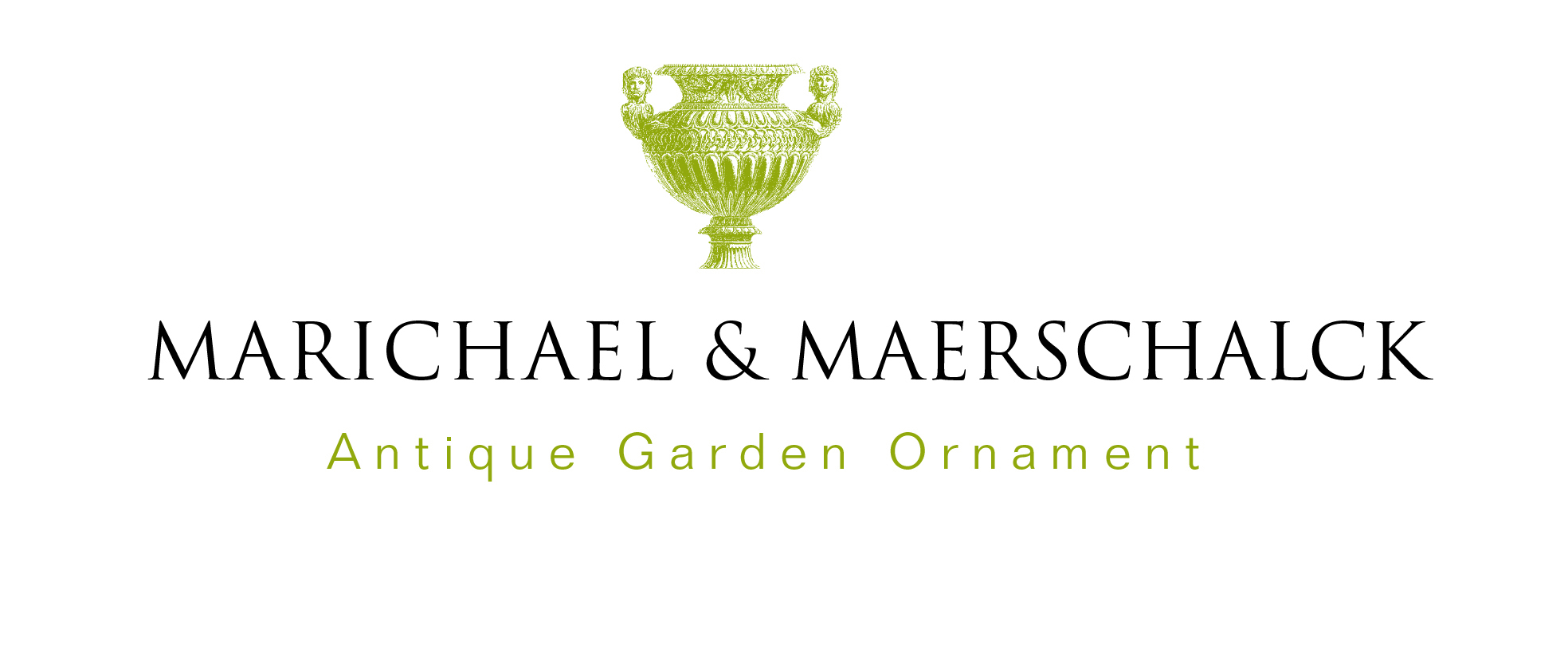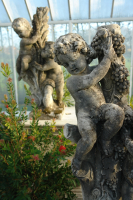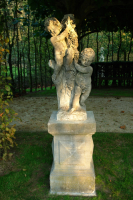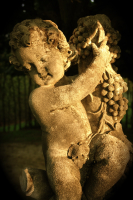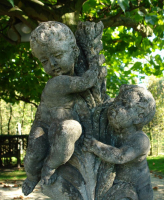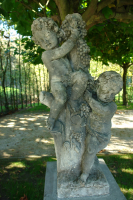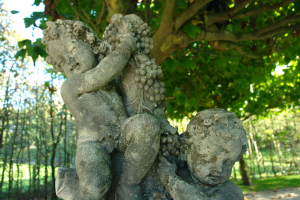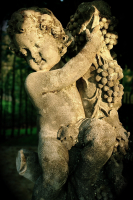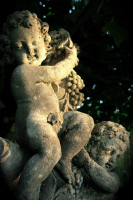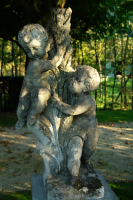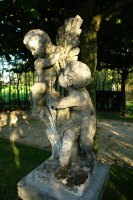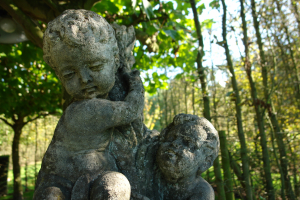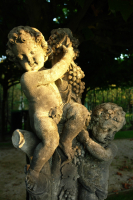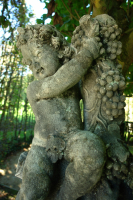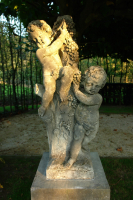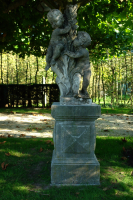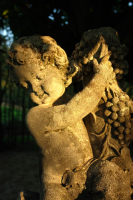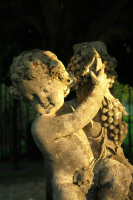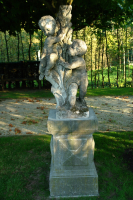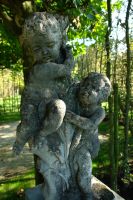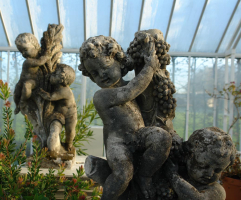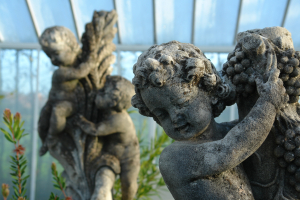- Home
- Pair of putti groups
Pair of putti groups
A pair of late 18th/ early 19th century limestone sculpture groups of 2 putti,allegorical for Summer and Autumn; origin Germany.
Dimensions: respectively 110 cms and 112 cms high; the bases 33 x 33 cms--
Condition: overall good condition, original paint
Reference: DEG082008
Literature:
Representing little boys in art dates from both classical and Christian traditions.The Romans depicted Cupid, the god of love, as a chubby and roguish young child that caused confusion (and sometimes chaos) with its love arrows.In Christian tradition cherubs, traditionally represented as angels, are the second-class angels inferior to the seraphs (angels of the first class).During the Renaissance sculptors, such as Donatella, often used putti - originally a term of abuse for a little boy derived from the Latin word puer- in their religious sculptures.In the 18th century the Rococo abundantly represented with regard to ecclesiastical architecture putti that are gathering together in pink and white marble and plaster.Putti have been the most desirable themes of garden sculpture for a long time.They symbolise a perfect mixture of innocence and naughtiness and in practical terms they are most of the time small enough to put on a terrace or even inside the house.
Antieke Tuinornamenten
Viooltjesdreef 39031 Baarle-aan-de-Leie
info@antieke-tuinornamenten.be+32 (0) 9 282 20 97+32 (0) 475 53 41 63
Opening hours
Bezoek aan de tuin enkel na afspraak.
